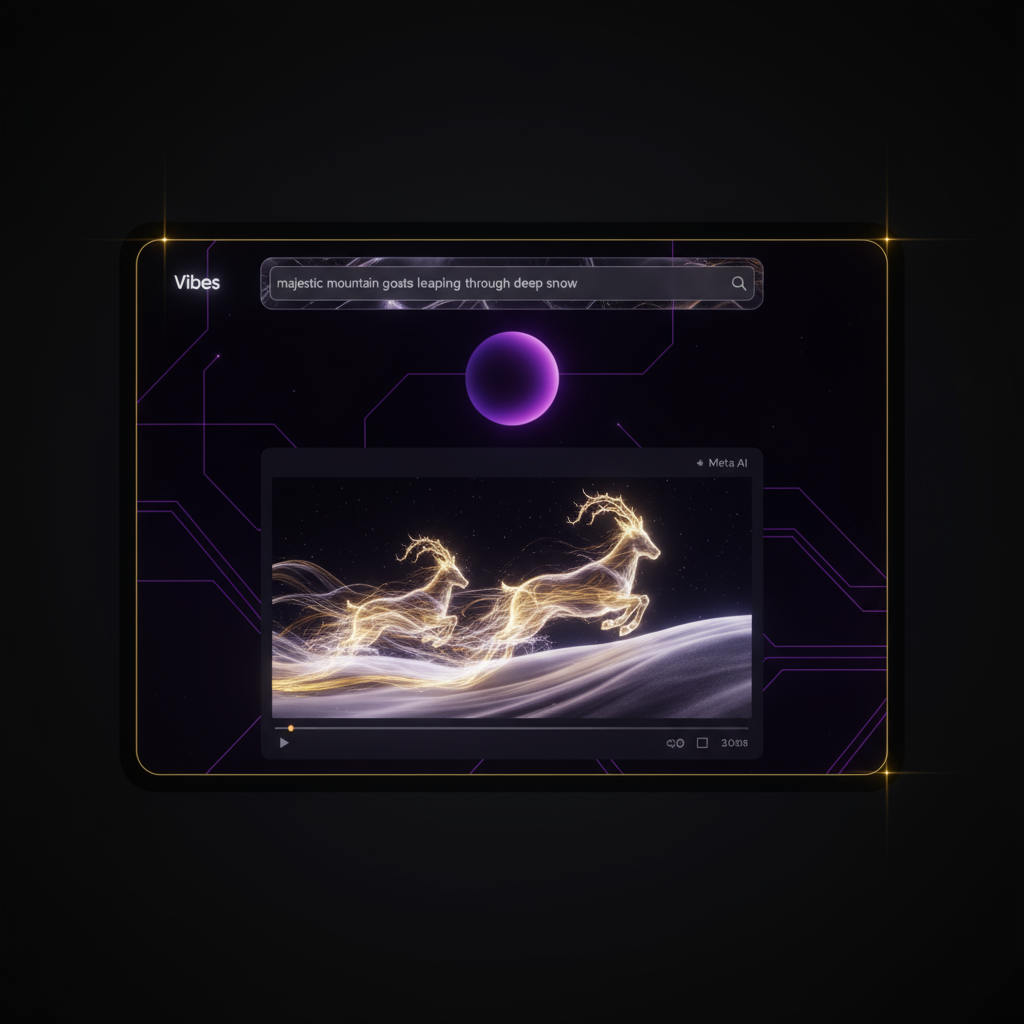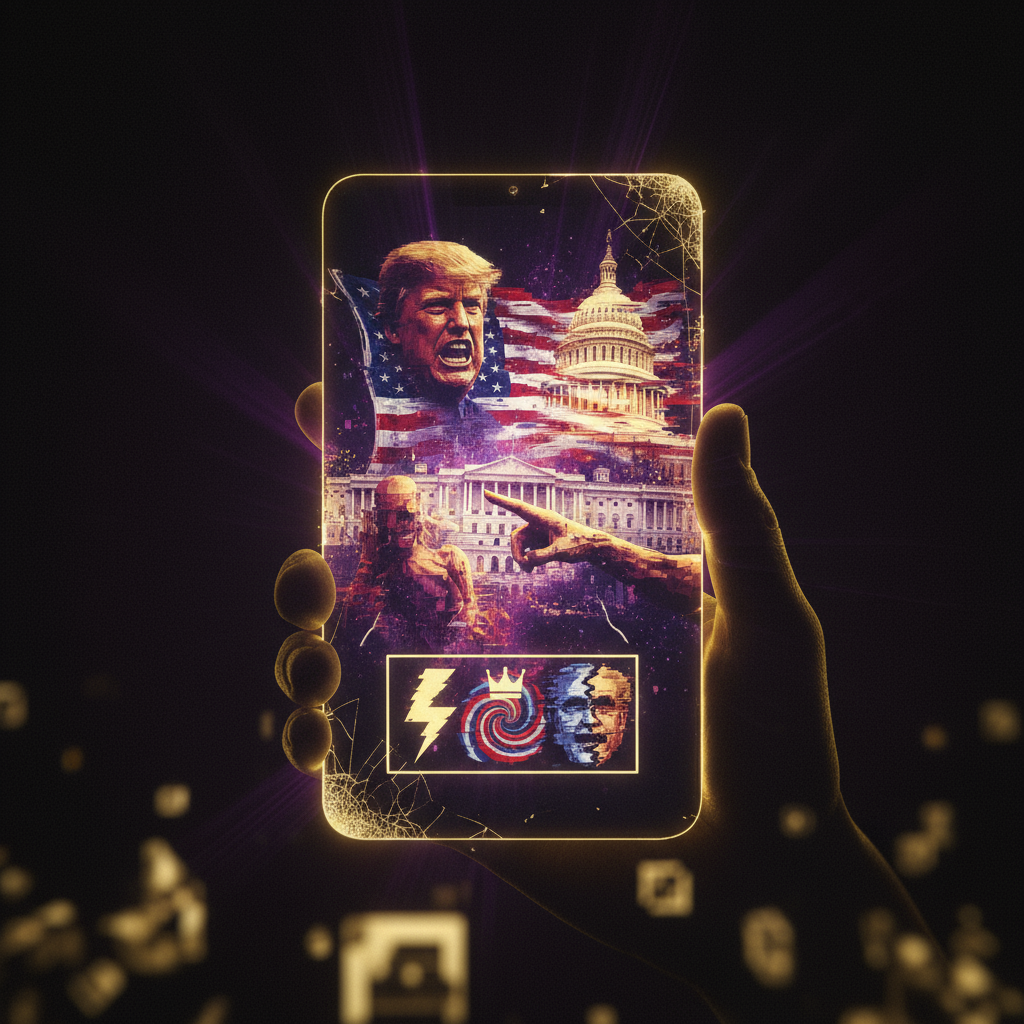
AI & Automation
Metas new Vibes AI video feed explained
Meta's new AI video feed is here. Understand the tech, the criticism, and its impact on social.

The quick answer
Meta has launched a new AI feature called Vibes across Europe. Here is what you need to know:
- Vibes is an AI-powered video feed. It lives inside the Meta AI app and allows users to create short videos entirely from text prompts.
- It works through text-to-video generation. You type a description, and the AI system creates a short video clip to match it, which you can then share.
- The feature faces criticism. An original article from TechCrunch AI calls the content "AI slop" due to its perceived low quality and often divisive nature.
What Is the Meta Vibes AI Video Feed?
Meta's 'Vibes' is a short-form video feed where every single piece of content is generated by artificial intelligence. It is not a platform for user-filmed videos. Instead, it is a tool for collaborative AI creativity.
The feature is now available to users across Europe through the expanded Meta AI app. Its primary goal is to let people create, remix, and share videos using simple text commands.
A New Competitor to TikTok and Shorts
Vibes is Meta's direct answer to the dominance of TikTok and YouTube Shorts. It takes a different approach by focusing entirely on AI-driven content creation rather than user-generated videos.
The feed offers an endless, algorithmically personalized scroll of clips. This format is similar to its competitors, but the content source is unique. Meta hopes this AI-first approach will drive new forms of engagement on its platforms.
Integrated Sharing to Facebook and Instagram
Vibes is built directly into Meta's ecosystem. Users can instantly share the AI videos they create to their Instagram and Facebook Stories or Reels.
This integration is designed to encourage creation and sharing. It also funnels this new type of AI content directly into the feeds of billions of users, boosting its visibility.
How the AI-Powered Short-Form Video Feed Works
The core of the Vibes feature is its powerful text-to-video synthesis. The process is designed to be simple and accessible for any user, regardless of technical skill.
From Text Prompt to Video
Users start by typing a descriptive text prompt into the Meta AI app. This can be anything from "majestic mountain goats leaping through deep snow" to more abstract concepts.
The system's AI then interprets the prompt and generates a short video clip that matches the description. Each video in the Vibes feed is displayed alongside the text prompt that created it. This provides transparency about its AI origin.

Beyond simple creation, users can remix videos made by others, add music, and customize the style to make it their own. This encourages collaborative creation within the feed.
The Technology Behind Vibes
To power this feature, Meta has leveraged partnerships with other AI companies. The underlying technology uses models from Midjourney for image generation and from Black Forest Labs for text-to-video synthesis.
The Meta AI app also gives users enhanced tools for text prompting, image generation, animation, and other advanced image editing functions. This suite of tools supports a wide range of creative AI outputs.
Why Critics Call It "AI Slop"
Since its launch, the Vibes feed has been labeled "AI slop" by some critics. This term points to specific concerns about the quality, value, and nature of the content produced by the AI.
The criticism isn't just about the technology itself. It focuses on the type of content that the algorithm appears to favor and promote within the feed.
Low Quality and Divisive Content
A primary concern is the high volume of what is described as low-quality or bizarre content. The feed is reportedly flooded with AI-generated videos centered on polarizing political figures, such as Donald Trump.
These videos are often sensational or jokey. They echo the patterns of political polarization seen on social media in the past, raising concerns about the feed amplifying misinformation and division.

Some commentators have also described the content as "boomer-coded," suggesting it is simplistic, meme-like, and appeals to a less internet-savvy demographic, contributing to the perception of low-quality output.
The Problem with Engagement-Driven Feeds
The recommendation engine for Vibes is engineered to hold your attention. It uses predictive modeling and rapid feedback loops, similar to TikTok's powerful algorithm.
When applied to AI-generated content, this can result in an "infinite slop machine." The feed produces an endless stream of clips with hypnotic motion but very little meaning. The algorithm prioritizes what keeps you scrolling, not what provides value or substance.
The Broader Trend of AI Generated Content
Meta's launch of Vibes is part of a much larger industry shift. In 2025, using generative AI for social media content is no longer a novelty. It is a standard practice for brands and platforms.
Over 80% of all content recommendations on social media are now powered by AI. An estimated 71% of social media images are also AI-generated, showing just how deeply these tools are embedded.
AI is Now a Standard Social Media Tool
Marketers rely on AI to meet the high demand for content. Generative AI allows brands to produce up to 72 posts per week, enabling an "always-on" content strategy that would be impossible with human teams alone.
This efficiency has led to widespread adoption. Around 80% of organizations globally are using AI in some form. For marketing teams, strong social media management now involves a strategic mix of human creativity and AI-powered tools.
Most marketers are optimistic about the change. Reports show 69% see AI as a job-creating tool that is revolutionizing their work, with 83% stating it helps them produce more content.
The Consumer Demand for Authenticity
While AI boosts content volume, consumers remain cautious. A study found that 55% of consumers trust brands more when their content is created by humans. This preference is even stronger among Millennials.
There is also discomfort with AI influencers, with 46% of consumers stating they are not comfortable with brands using them. Transparency has become a key issue. Lack of clear labeling for AI content can erode user trust and damage engagement.
How Social Platforms are Handling AI Content
Every major social platform is investing heavily in AI. Meta is not alone in this race. However, competitors like TikTok, Google, and X are each taking slightly different approaches to integrating AI-generated content.
All platforms are also beginning to penalize low-quality "AI slop" to maintain user trust.
TikTok's Focus on Community and Curation
TikTok’s algorithm remains the engine of its success. It uses AI to discover and boost content, but the platform's culture still heavily prioritizes authenticity, trends, and influencer collaborations.
The platform's short-form format is ideal for AI-driven discovery, but the most successful content often feels human and community-driven. TikTok leverages AI for curation more than pure generation.
Google's Approach with YouTube Shorts
Google is competing directly with TikTok through YouTube Shorts. Its AI is used for video recommendations and optimizing user feeds. Google is also integrating generative AI tools for video creation and editing.
A key focus for Google is also content moderation and discovery within the larger YouTube ecosystem. High-quality SEO content principles still apply, as Google's systems are designed to reward valuable and original material, whether human- or AI-assisted.
X's Strategy for Content Curation
X (formerly Twitter) is using AI to power personalized content feeds, detect spam, and analyze trends. The platform is also experimenting with generative AI for summarizing long threads and creating visual assets to increase engagement.
What This Means For Your Brand
The rise of AI content feeds like Vibes presents both opportunities and challenges. Your strategy must adapt to this new environment without sacrificing the trust you have built with your audience.
Focus on Quality Over Quantity
The backlash against "AI slop" sends a clear message. Producing massive volumes of low-quality content will harm your brand. Platforms are already moving to penalize this type of output.
Use AI as a tool to assist your human creative team, not replace it. Focus on creating valuable, original, and authentic content that resonates with your audience. Let AI handle routine tasks so your team can focus on strategy and creativity.
Maintain Transparency with Your Audience
Trust is your most valuable asset. Be clear and upfront about your use of AI. Whether you are using AI-generated images, text, or video, proper labeling helps manage expectations and builds trust.
Remember that 55% of consumers prefer human-made content. Lean into that. Highlight the people and expertise behind your brand to create a stronger connection with your customers.
read more
Similar articles

How to improve brand visibility in AI search

Your 2026 content strategy for AI agents
Let’s grow
Start your monthly marketing system today
No guesswork, no back-and-forth. Just one team managing your website, content, and social. Built to bring in traffic and results.




